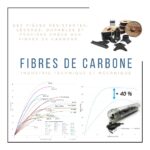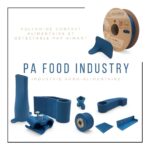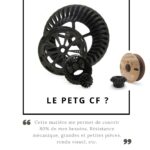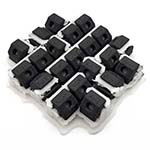
Nanovia HIPS as a soluble support material for 3D printing
April 6, 2023
Supports in 3D printing need to be removed manually a posteriori, which may leave marks and can take time for more complex structures.
Soluble materials, like HIPS, can be used as supports and dissolved. The have the advantage of being able to support unreachable internal areas and make for smooth interface zones. In this pictured example, the supports were used to optimize the printing angle in regards to the mechanical forces the part is meant to endure.
High Impact Polystyrene (HIPS), as its name indicates, has a very high shock resistance. This resistance also makes it suited as a base 3D printing material, especially for press tools.
HIPS has a 3D printing temperature, mechanical and thermal properties close to ABS/ASA. This similar temperature makes it so when printing these two there is no wait time for the second support material extruder to cool or heat before changing.

HIPS is a thermoplastic that is soluble in limonene (C10H16). Limonene is a natural hydrocarbon that’s extracted from citrus zest. Unlike PVA, HIPS is not soluble in water which makes for easy long term storage. When submerged in limonene, HIPS completely dissolves in about 24 hours, and doesn’t leave any residue.
HIPS and limonene are compatable with most 3D printing materials.

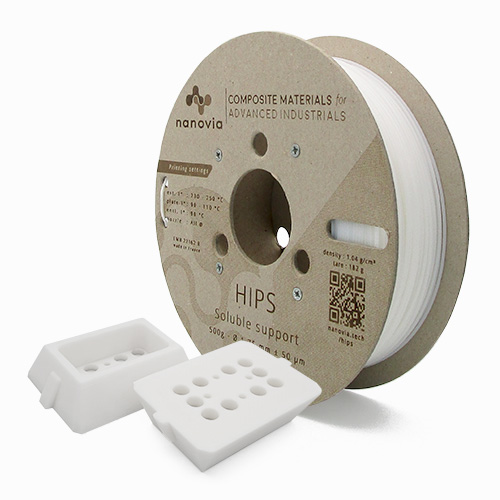
Categorised in: Products

